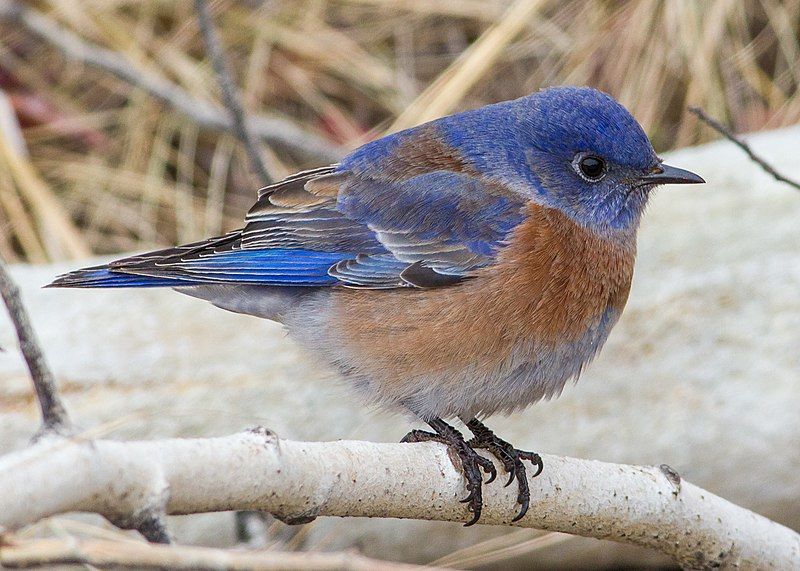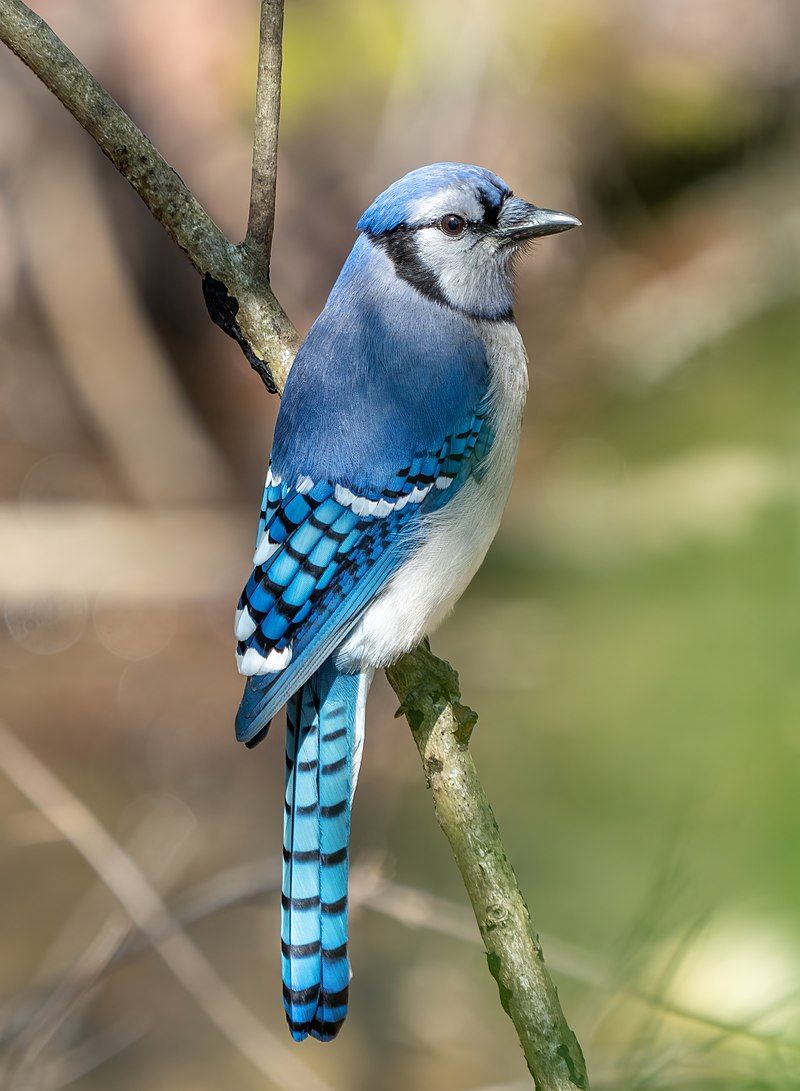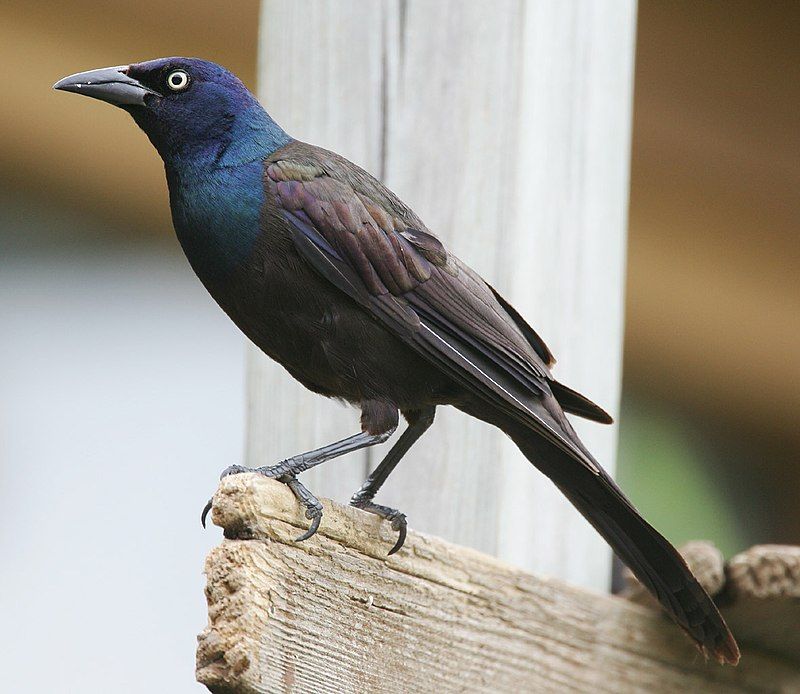Bluebirds are a common sight in Montana and have been an essential part of the state’s wildlife since the early settlers arrived in the area. They are a symbol of good luck and a reminder of the beauty of nature.
Montana’s diverse landscape provides the perfect habitat for many species of bluebirds, including the Mountain Bluebird, the Western Bluebird, and the Tree Swallow.
These birds can be seen in various habitats, including coniferous forests, grasslands, montane meadows, and riparian woodlands.
In addition to providing a beautiful sight, bluebirds are essential components of the food chain, providing food for other species such as hawks, owls, and even small mammals.
7 Blue Birds in Montana
Montana is a state that offers a rich diversity of wildlife, including many species of birds. Among them, some of the most striking are the bluebirds, which display a range of hues from turquoise to indigo.
Here are 7 of the most beautiful blue birds you can find in Montana.
1. Mountain Bluebird
The mountain bluebird is a small thrush, about the size of a sparrow, that migrates through the mountainous regions of western North America. It is identifiable by its bright turquoise-blue plumage and light underbelly. It also has a thin bill and striking black eyes.
Adult males of the species are particularly vibrant in color, while females and juveniles are somewhat lighter in hue. This bird species is often seen perched atop tall trees and shrubs or in open areas such as meadows and grasslands.
They mainly feed on insects, spiders, and other small invertebrates and have been known to enjoy the occasional berry or seed. The mountain bluebird is an integral part of the local ecosystem and is a keystone species that helps maintain a healthy balance in its environment.
| Kingdom | Animalia |
| Phylum | Chordata |
| Class | Aves |
| Order | Passeriformes |
| Family | Turdidae |
| Genus | Sialia |
| Species | S. currucoides |
2. Western Bluebird

The western bluebird is a beautiful species of bird native to North America. It is a member of the thrush family, also known as the Turdidae family. The western bluebird is a small bird, typically measuring 6-7 inches long.
It has a light brown body, vibrant blue head, wings, and white belly. The western bluebird can be found in various habitats, including open woodlands, grasslands, and forests.
They typically feed on insects, such as beetles and caterpillars, and are known to forage on the ground. Western bluebirds also feed on fruit and berries during the winter months.
Although they are not considered threatened or endangered, their populations have been declining due to habitat loss, and they are now listed as a species of concern in some states. With exemplary conservation efforts, the western bluebird can continue to thrive.
| Kingdom | Animalia |
| Phylum | Chordata |
| Class | Aves |
| Order | Passeriformes |
| Family | Turdidae |
| Genus | Sialia |
| Species | S. mexicana |
3. Blue Jay

The blue jay is a bird that is part of the family Corvidae and is native to eastern North America. Its range is mainly spread across the eastern and central United States, but some populations migrate, such as those in Newfoundland, Canada.
In addition, there are also breeding populations of blue jays that can be found in southern Canada. These birds inhabit various habitats, ranging from backyards and parks to forests and woodlands.
They are highly adaptable and can even be found in urban areas, where they often come to bird feeders to take advantage of the food provided. Blue jays are pretty vocal and have a variety of social behaviors, such as mobbing predators and protecting their nesting sites.
They are also known to be clever and resourceful birds, often finding ways to get food from humans or other animals.
| Kingdom | Animalia |
| Phylum | Chordata |
| Class | Aves |
| Order | Passeriformes |
| Family | Corvidae |
| Genus | Cyanocitta |
| Species | C. cristata |
4. Steller’s Jay
Steller’s jay is a species of bird primarily found in western North America and the mountains of Central America. It belongs to the same family of birds as the blue jay, which is native to eastern North America.
This species of jay is the only crested species found in the western part of the continent, west of the Rocky Mountains. Steller’s jays are vibrant, sporting predominantly blue feathers and prominent black and white markings.
Their coloring is contrasted by their crest, a bright and striking shade of light blue. They are also quite vocal, making various sounds, including rattles, squeaks, and even imitating other birds’ calls.
Steller’s jays are highly social birds and can often be seen in large flocks, feasting on various food sources such as nuts, berries, insects, and even small animals. They are also adept at thieving food from other birds, often stealing food from their mouths!
| Kingdom | Animalia |
| Phylum | Chordata |
| Class | Aves |
| Order | Passeriformes |
| Family | Corvidae |
| Genus | Cyanocitta |
| Species | C. stelleri |
5. Lazuli Bunting
The lazuli bunting is a small, brightly-colored songbird native to North America. Its name is derived from the deep blue gemstone lapis lazuli, its namesake and the source of its striking blue plumage.
The lazuli bunting is easy to identify due to its bright coloration; both males and females have a bright blue head, back, wings, white chest, and belly. The wings and tail are black with white edging, and the male has a rufous coloring on its flanks and sides.
The bird is typically found in open habitats such as grasslands, shrubby fields, and edges of woodlands. It is a ground feeder and eats mostly insects and seeds.
The lazuli bunting is an integral part of North American ecosystems, providing food for predators and helping to control insect populations.
| Kingdom | Animalia |
| Phylum | Chordata |
| Class | Aves |
| Order | Passeriformes |
| Family | Cardinalidae |
| Genus | Passerina |
| Species | P. amoena |
6. Belted Kingfisher
The Belted Kingfisher is a large, vibrant bird native to North America and part of the Alcedinidae family. It is identifiable by its size and vibrant coloration, with a blue-gray back, white breast, and rust-colored belly.
The Belted Kingfisher is a water kingfisher, meaning that it is adept at fishing in water, and its diet consists mainly of fish. Recent research has suggested that the Alcedinidae family should be divided into three subfamilies.
It is believed that the Belted Kingfisher should be part of the subfamily Cerylinae, which consists of several species of kingfishers, including the Ringed Kingfisher, the American Pygmy Kingfisher, and the Amazon Kingfisher.
This research has helped to provide a more comprehensive understanding of the different species of kingfishers and their evolutionary relationships.
| Kingdom | Animalia |
| Phylum | Chordata |
| Class | Aves |
| Order | Coraciiformes |
| Family | Alcedinidae |
| Genus | Megaceryle |
| Species | M. alcyon |
7. Common Grackle

The common grackle is a species of large icterid bird found throughout North America. It was first described in 1758 by the renowned scientist Carl Linnaeus. The bird has three different subspecies, all with distinct physical characteristics.
Adult common grackles have a long, dark bill, pale yellow eyes, and a long tail. These physical traits are what distinguish it from other species of birds.
The common grackle’s size and range make it a ubiquitous sight in North America and can often be spotted in large numbers. Its bold and inquisitive nature also makes it an easily recognizable species.
The common grackle is an integral part of the North American ecosystem and is crucial to the food chain.
| Kingdom | Animalia |
| Phylum | Chordata |
| Class | Aves |
| Order | Passeriformes |
| Family | Icteridae |
| Genus | Quiscalus |
| Species | Q. quiscula |
Conclusion
Bluebirds have been a part of Montana’s wildlife for many years. They are an essential part of the ecosystem, providing food for other animals and insects and being a beautiful addition to the landscape.
With proper habitat management and conservation efforts, bluebirds can continue to be a part of Montana’s wildlife for generations.